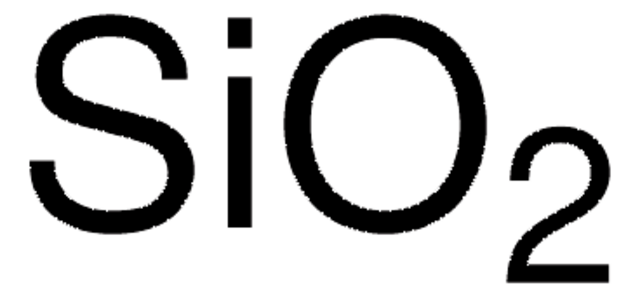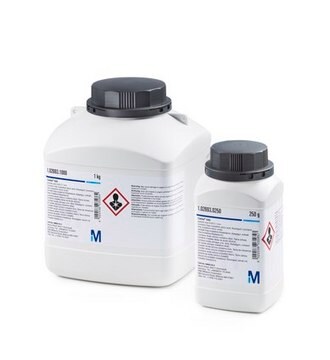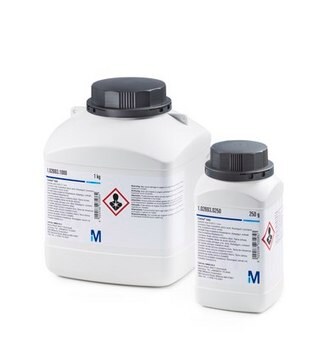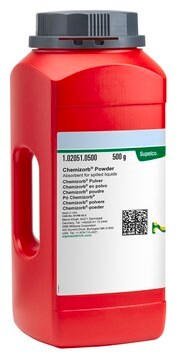07-1090
Diatomaceous earth non-washed
CP
Synonyme(s) :
Diatomaceous earth, Diatomaceous silica, Kieselguhr
About This Item
Produits recommandés
Qualité
CP
Forme
solid
Disponibilité
available only in Japan
Chaîne SMILES
O=[Si]=O
InChI
1S/O2Si/c1-3-2
Clé InChI
VYPSYNLAJGMNEJ-UHFFFAOYSA-N
Vous recherchez des produits similaires ? Visite Guide de comparaison des produits
Application
Mention d'avertissement
Danger
Mentions de danger
Conseils de prudence
Classification des risques
STOT RE 1 Inhalation
Organes cibles
Lungs
Code de la classe de stockage
6.1D - Non-combustible acute toxic Cat.3 / toxic hazardous materials or hazardous materials causing chronic effects
Classe de danger pour l'eau (WGK)
nwg
Point d'éclair (°F)
Not applicable
Point d'éclair (°C)
Not applicable
Équipement de protection individuelle
Eyeshields, Gloves, type P2 (EN 143) respirator cartridges
Certificats d'analyse (COA)
Recherchez un Certificats d'analyse (COA) en saisissant le numéro de lot du produit. Les numéros de lot figurent sur l'étiquette du produit après les mots "Lot" ou "Batch".
Déjà en possession de ce produit ?
Retrouvez la documentation relative aux produits que vous avez récemment achetés dans la Bibliothèque de documents.
Notre équipe de scientifiques dispose d'une expérience dans tous les secteurs de la recherche, notamment en sciences de la vie, science des matériaux, synthèse chimique, chromatographie, analyse et dans de nombreux autres domaines..
Contacter notre Service technique


![Dichlorotriphenylphosphine[bis(2-(ethylthio)ethyl)amine]ruthenium(II) 97%](/deepweb/assets/sigmaaldrich/product/structures/355/871/c9ac8b63-9a77-4c66-b545-cb7c41673aa4/640/c9ac8b63-9a77-4c66-b545-cb7c41673aa4.png)

